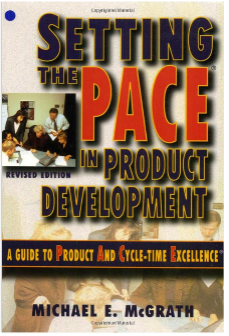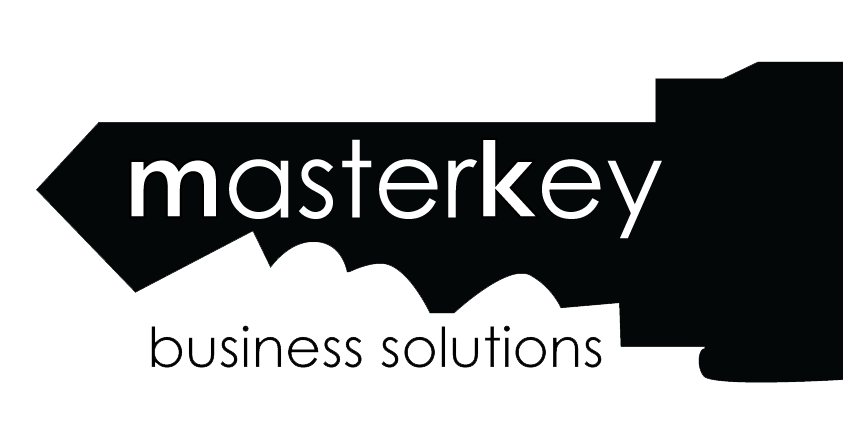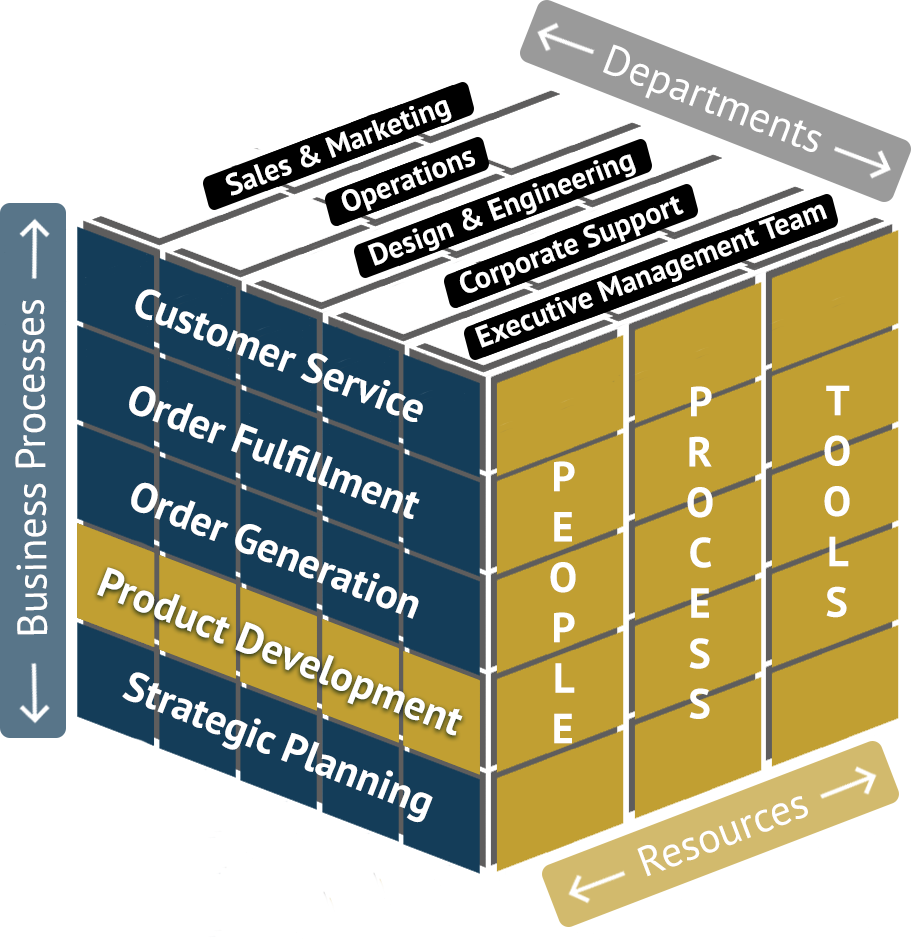
Pillar 2
Product Development
The product development process is a series of steps that a company follows to design, create, and bring a new product to market.
The process can vary from company to company and from industry to industry, but it typically includes the following stages:
This stage is where the idea for a new product is generated. It could come from internal brainstorming sessions, market research, customer feedback, or a combination of these.
In this stage, the idea is refined and defined, and a business case is built to assess the potential of the product. Market research is conducted to determine the target audience, competition, and pricing strategy.
A working prototype of the product is created to demonstrate its functionality and to validate the design concept.
The prototype is tested to ensure it meets the requirements and specifications set out in the concept development stage. Feedback is gathered from customers and stakeholders to refine the product further.
In this stage, the product design is optimized for mass production, taking into consideration factors such as cost, materials, and assembly.
- The product is launched to the market and made available for purchase. This stage also includes ongoing marketing and support efforts to ensure its success.
After the product has been launched, a review is conducted to assess its performance and to identify areas for improvement. This information is used to guide future product development efforts.
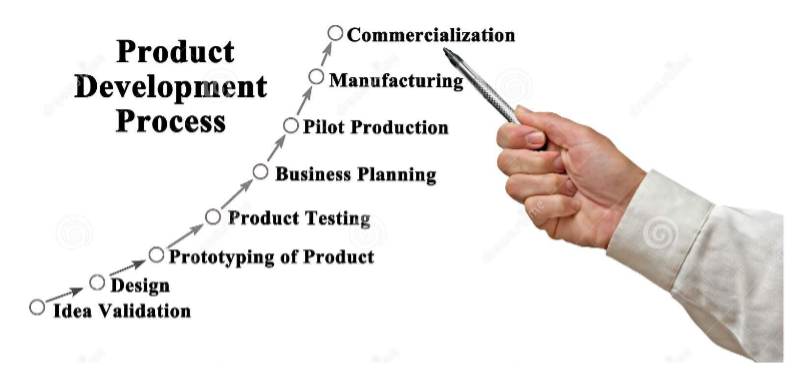
This is a general outline of the product development process, and it can be modified or expanded based on the needs of the company and the product being developed.
Stage Gate development Process
Below are excerpts from slidemodel.com
For the complete article, click the button below.
All about Stage-Gate Process for Product Development
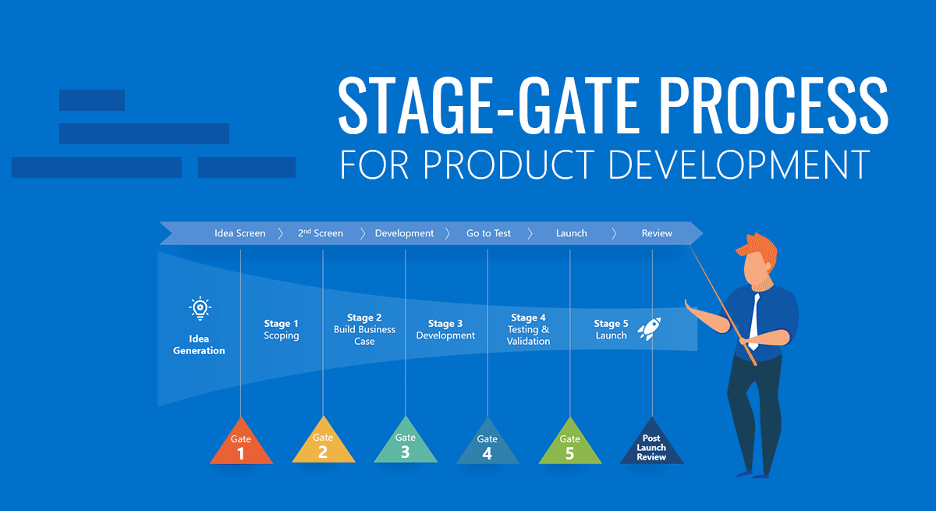
Many ideas might be explored during product development, product improvement, and process improvement to proceed with the most suitable option. Project managers need to carefully analyze the feasibility of the concepts and ideas before them and choose the ones that appear to be the most viable. The Stage-Gate Process provides project managers with the necessary tools to scrutinize ideas for viability before making it to the development stage.
What is the Stage Gate Process?
The Stage Gate Process, also known as the Phase Gate Process, is a technique used by project managers to assess the viability of developing a new product and improving a process or business change. It is a phased approach by which is divided by different gates or decision points to analyze the business case, resources, risks, and forecast to determine the best course of action. It is important to know What is a Phase Gate Process, as the different stages of each gate include decision makers, such as managers, board members or a steering committee.
What Steps are Involved in the Stage Gate Process?
The name Stage-Gate© or Phase-Gate explains the way the technique works. It is a combination of different steps, where the ideas have to go through various hoops for assessment, known as gates. Let’s take a closer look at the entire process the Stage Gate Process provides and how it benefits project managers and decision makers to find the best possible option to proceed forward. The traditional Stage-Gate Process or Phase Gate Process has five basic steps after the discovery or the ideation process is completed. These include scoping, building a business case, development, testing, and validation, followed by launch.
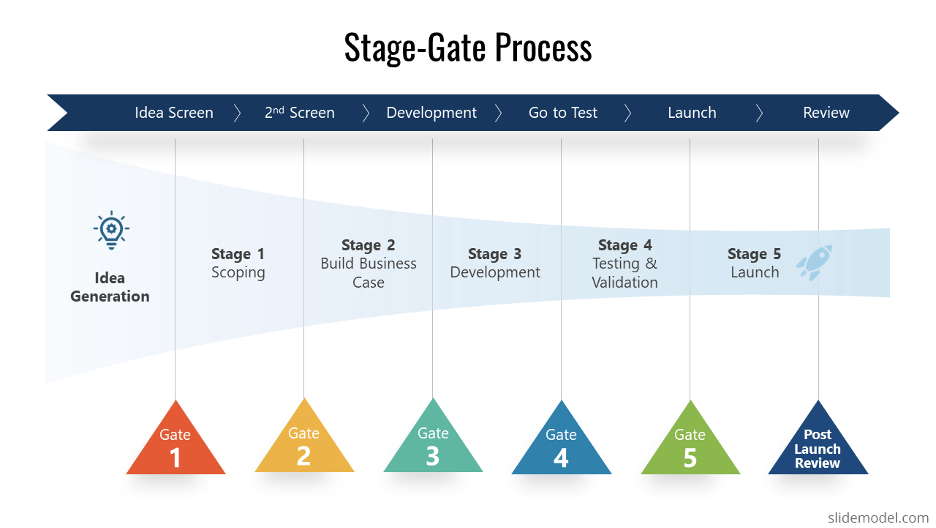
The discovery or ideation process involves finding an idea to pursue. This step is also known as the Idea Generation phase. This can include various stages based on the methods a company might employ in search of new ideas and improved processes to implement. There might be inter-departmental brainstorming, market research, feedback from customers, suppliers, product teams, etc.
Scoping is the first phase of the Stage-Gate Process, where the viability of the product is analyzed based on various factors. These might include demand for the product in the market, threats from competitors, market and economic conditions, the strengths and weaknesses of the product, etc. This might just be the right time for companies to resort to tools such as a SWOT or PESTEL analysis.
Once the product passes through the first step, it’s time to build a business case, project plan, and feasibility review. This is the last phase for concept development, as the following stages include development, testing, and launch. This phase is further divided into four steps since this is a complex phase that requires carefully considering all aspects of the initiative to avoid any pitfalls later. These four phases include product definition and analysis, followed by the development of the business case and project plan, and finally, the feasibility review.
The development phase of the Stage-Gate Process uses the plans from the preceding steps to execute the plan that has already been fleshed out. Since it has been determined till this phase that the product is viable, has been defined and analyzed, the business case and plan have been completed and deemed feasible for development.
The development stage might include some initial design and development, tests, and eventually a prototype. The marketing plans are also set to proceed and must align with the goals already defined for the initiative. The project timeline is reviewed during development to ensure the project is on track. Before the next phase, a prototype will already be prepared, which is now ready for extensive testing.
This phase of the Stage-Gate Process validates the product. The product itself is evaluated and the processes involved, customer acceptance, and financial aspects tied to the project. The testing phase requires near, field, and market testing. To emphasize the importance of this phase, we can take the example of Microsoft, which laid off its almost entire testing team for Windows, as was revealed by former employee Jerry Berg. The change in the testing process resulted in significant bugs in Windows 10 that have haunted Microsoft since the product’s launch. This can be a significant failure for the testing and validation process.
After passing through all the principal gates, the product is launched. The product developer must have a marketing strategy to garner customer interest and attract demand for the product. The launch also requires several other careful considerations, including the volume to be produced in anticipation of the demand of the product, modes of delivery, resolution of customer complaints, etc.
Recommended reading for a highly effective product development methodology:
If you are developing a new product or service and need assistance with defining or enhancing your product or service development process, please contact us for a free consultation.
We can provide you additional information or advice to improve your efficiency and effectiveness by integrating it into MasterKey’s Business Management System™.
- 204.918.0884
- m.grant@master-key.ca

